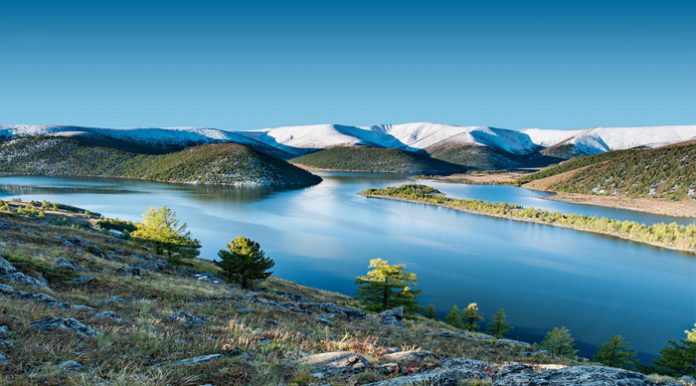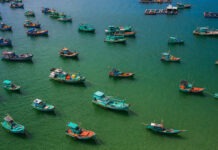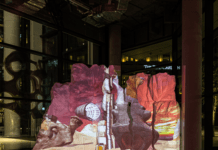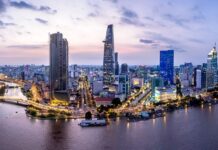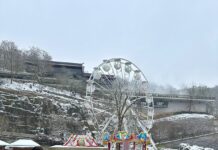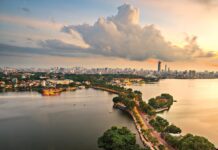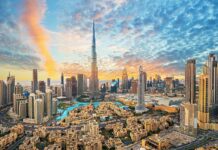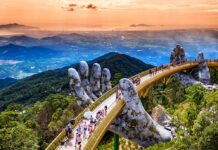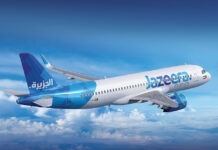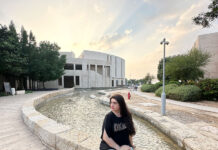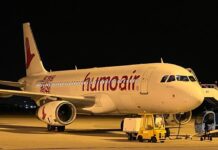For those who love the rugged outdoors, Mongolia is love at first sight. Vast, remote and naturally beautiful, the steppes and deserts of Mongolia are an adventure destination on their own. Here, hardy nomadic herders practice traditions and ways of life that have remained largely unchanged over a thousand years.
The country’s nomadic culture is famous — visitors can sleep in a herder’s traditional felt yurt called a ger, help round up the sheep, ride horses and simply ‘get back to nature’. The legacy of Genghis Khan (Chinggis Khaan) and resurgent nationalist pride sharpens the experience. While a culture of tremendous hospitality makes locals more accessible; it is indeed refreshing to meet people who are willing to open their doors to strangers.
Mongolia, which remained sealed off from the world during much of 20th century seems to be heading the opposite way in the 21st century — its citizens have become globe-trotters and outsiders are arriving by the plane loads seeking business and leisure opportunities.

Ulaanbaatar: If Mongolia’s yin is its pristine countryside, then Ulaanbaatar (UB) conforms nicely to its yang. An enormous city of pulsating commerce, wild traffic, sinful nightlife and bohemian counter-culture, the Mongolian capital elicits as much shock as it does excitement. The contrasts within the city can be exasperating too; Armani-suited businessmen rub shoulders with mohawked punks and del-clad nomads fresh off the steppes. This chaotic capital is not the easiest city to navigate, but with a little patience, travellers can take care of all their logistical needs, watch traditional theatre, sample international cuisine and party till three in the morning. This ever-changing city may be the biggest surprise of your Mongolian adventure.

Chinggis Khaan Square: The Square features a bronze statue of Damdin Sükhbaatar, the hero who declared Mongolia’s final independence from the Chinese, astride his horse. In 2013 the city authorities changed the name from Sükhbaatar Square to Chinggis Khaan Square, although many citizens still refer to it by the old name. Today, the square is occasionally used for rallies, ceremonies and rock concerts and festivals, but is generally a relaxed place where children drive toy cars and teens whiz around on bikes.

Khüiten Peak: The highest summit in Mongolia, Khüiten Peak is located at the very west region, in the Tavan Bogd Mountain range, marking the border with China. It is part of the chain of five mountains, which represents five saints in the country: Khuiten being ‘cold’, Burgd ‘the eagle’, Olgii ‘cradle’, Malchin ‘the herder’ and Nairamdal ‘friendship’. The summit is at 4376m above sea level, and was ascended for the first time in 1963 by an expedition mandated by the Mongolian Government. It is extreme in every way, where temperatures average below zero all year long. As the air is getting rare at this altitude, only experienced climbers are venturing to this yet wonderful area, making a more unique adventure. The best period of the year to climb is between June and August.

Ongiin Khiid: The bend in the pretty river here marks the remains of two ruined monasteries: Bari Lam Khiid, on the north, built in 1810 and Khutagt Lam Khiid, on the south, built in 1760. Collectively they are known as Ongiin Khiid. Formerly one of the largest monasteries in Mongolia, and home to over a thousand monks, the complex was destroyed in the 1937 communist purges when over 200 lamas were murdered. Since 1990 a small but growing contingent of monks has set up shop amid the ruins, completing a small temple in 2004, using some original beams from the old ruined monastery to build it.

Zanabazar Museum of Fine Arts: This museum has a collection of paintings, carvings and sculptures, including many by the revered sculptor and artist Zanabazar. It also contains other rare, and sometimes old, religious exhibits such as scroll thangka (paintings) and Buddhist statues, representing the best display of its kind in Mongolia. A bonus is that most of the exhibit captions in the museum are in English.The building itself carries historical value as it was built in 1905, making it one of the oldest Manchu-era commercial buildings in the city.

Choijin Lama Temple Museum: This temple museum is composed of four temples that were built in the years 1904 to 1908. It is dedicated to Choijin Lama Luvsankhaidav, the eighth Bogd Khan’s little brother. It is considered as one of the most beautiful monasteries of Mongolia. It ceased to be used as a place of worship in 1938 and became a museum in 1942. It was then restored in 1960-1961. Today, the Choijin Lama Museum houses collections of sacred and liturgical objects, notably masks of ceremony for thetsam dance (religious dance). The paintings, sculptures, embroideries and masks here can be dated back from 17th, 18th, 19th and 20th centuries.

Winter Palace of the Bogd Khan: Built between 1893 and 1903, this palace is where Mongolia’s eighth Living Buddha, and last king, Jebtzun Damba Hutagt VIII (often called the Bogd Khan), lived for 20 years. For reasons that are unclear, the palace was spared destruction by the Russians and turned into a museum. There are six temples in the grounds; each now contains Buddhist artwork, including sculpture and thangka .
The Bogd Khan’s penchant for unusual wildlife explains the extraordinary array of stuffed animals in the palace. Some of it had been part of his personal zoo – look out for the photo of the Bogd’s elephant, purchased from Russia for 22,000 roubles.

Gurvan Saikhan National Park: With its iconic sand dunes, ice canyon, striped badlands and stunning mountain vistas, this is understandably one of Mongolia’s most popular national parks. Most travellers only see a fraction of it, sticking to the main sites – the standout one being the monstrous sand dunes known as Khongoryn Els. With more time, though, it is possible to drive to the remote western area – an eerie landscape so lacking in life that you may feel as if you have landed on Mars.

Cuisine: Due to the effect of extreme continental climate, the traditional diet of Mongolians primarily consists of dairy products, meat, and animal fats. Use of vegetables and spices are limited. The most common rural dish cooked is mutton, often without any other ingredients while in the city, ‘buuz’, a steamed dumpling filled with meat is very famous.
Festival:

Naadam festival: The Mongolian national holiday Naadam is celebrated each year on 11 July. ‘Eriin gurvan naadam’ the three manly games of wrestling, horse racing, andarchery, make up the core activities of the National day festivals.

